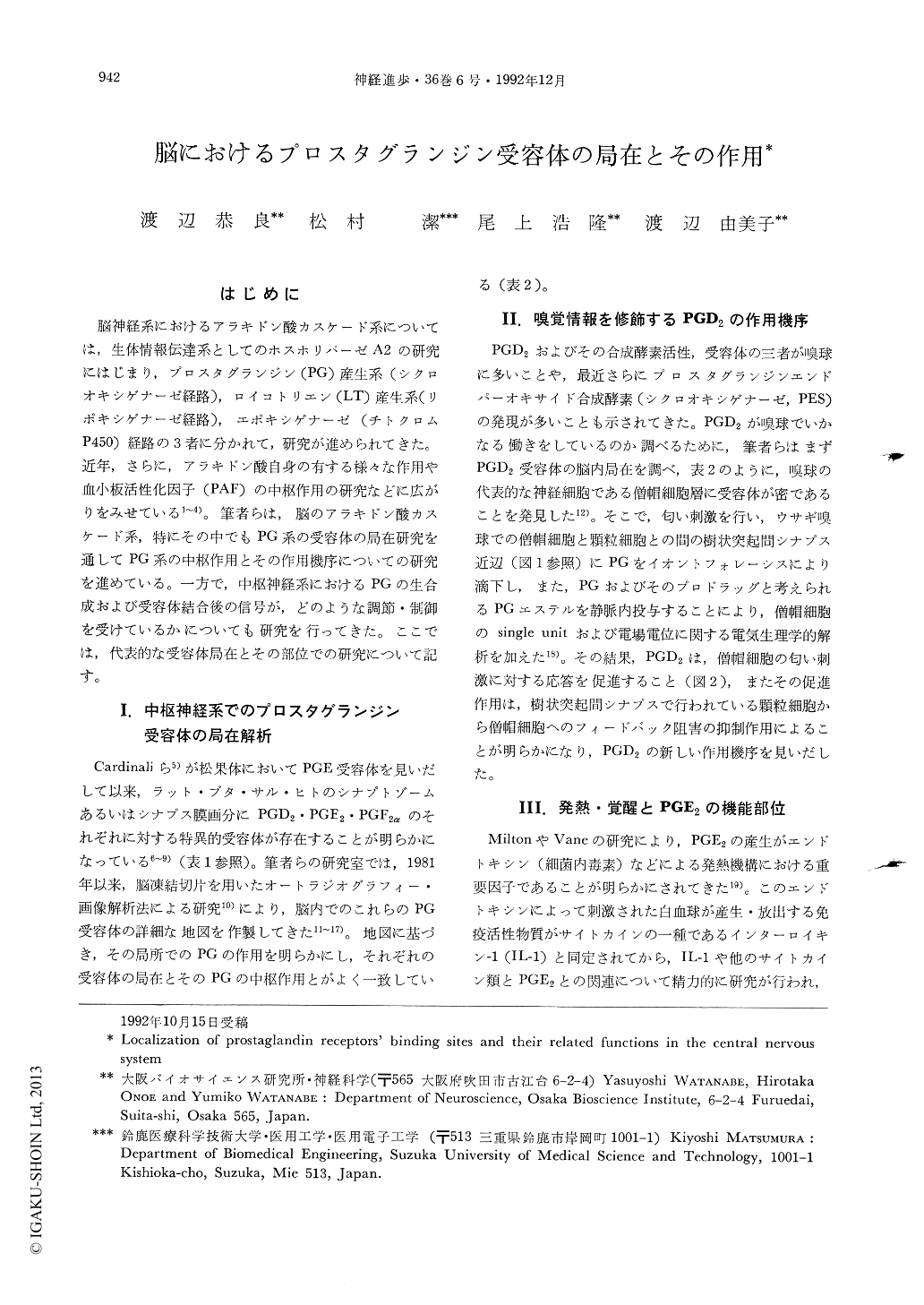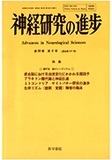Japanese
English
- 有料閲覧
- Abstract 文献概要
- 1ページ目 Look Inside
はじめに
脳神経系におけるアラキドン酸カスケード系については,生体情報伝達系としてのホスホリパーゼA2の研究にはじまり,プロスタグランジン(PG)産生系(シクロオキシゲナーゼ経路),ロイコトリエン(LT)産生系(リポキシゲナーゼ経路),エポキシゲナーゼ(チトクロムP450)経路の3者に分かれて,研究が進められてきた。近年,さらに,アラキドン酸自身の有する様々な作用や血小板活性化因子(PAF)の中枢作用の研究などに広がりをみせている1~4)。筆者らは,脳のアラキドン酸カスケード系,特にその中でもPG系の受容体の局在研究を通してPG系の中枢作用とその作用機序についての研究を進めている。一方で,中枢神経系におけるPGの生合成および受容体結合後の信号が,どのような調節・制御を受けているかについても研究を行ってきた。ここでは,代表的な受容体局在とその部位での研究について記す。
Autoradiographic localization of prostaglandin (PG) receptors' binding sites was investigated with in vitro labelling technique using frozen sections of rat and monkey brains. PGD2 and PGE2 receptor binding sites were mapped in the rat brain and monkey diencephalon. PGD2 receptor binding is dense in the 2nd and 3rd layers of cingulate and occipital cotices, mitral cell layer of olfactory bulb, dentate gyrus of hippocampus, lateral septal nucleus, preoptic area, mammillary body, anterior nuclei group of thalamus, superior and inferior colliculi, central gray, Purkinje and molecular layers of cerebellum, and superficial layer of spinal cord. PGE2 receptor binding is dense in the anterior wall of third ventricle, entorhinal cortex, ventral hippocampus (subiculum), amygdala, dorsomedial hypothalamus, mammillary complex, paraventricular and anteroventral nuclei of thalamus, central gray, superior colliculus, raphe nuclei, locus coeruleus, nucleus solitary tract, dorsal parabrachial nucleus, spinal trige-minal nucleus (caudal part), and the laminae 1 and 2 of spinal cord. Unlike PGD2 and PGE2 receptors, PGF2α receptor binding was low and diffuse; only significant in the paraventricular and supraoptic nuclei of hypothalamus. On the basis of these maps, the function of PGs was investigated by use of neurophysiological approaches in the due sites. We found that [1] PGD2 inhibited the recurrent inhibition of granule cell to mitral cell responses to odor, resulting in the prolongation of excitation of mitral cells after odor stimulation. [2] The threshold of PGE2 for hyperthermia is lower in the regions close to the anterior wall of 3rd ventricle than preoptic regions which was the candidate of PGE action center for its febrile response. [3] PGE2 promotes wakefulness independent of febrileresponse at the posterior hypothalamus near tubelomammilary nucleus. [4] PGE2 directly acts on nonspecific cation channel(s) of nucleus solitary tract neurons in the slice-patch clamp mode. More recently, using [3H]iloprost, a stable PGI2 receptor agonist, we could show a presumable PGI2 receptor localization in the brain, that is in the striatum, hippocampus, amygdala and nucleus solitary tract in the monkey brain and in the thalamic nuclei, hippocampus, amygdala, and nucleus solitary tract in the rat brain. Using the membrane fraction of monkey striatum, we demonstrated the effect of iloprost on the dopamine D2 receptor binding but not on the dopamine D1 receptor binding.

Copyright © 1992, Igaku-Shoin Ltd. All rights reserved.


